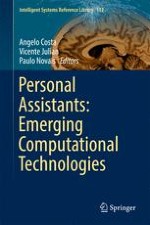2018 | OriginalPaper | Buchkapitel
8. Characterize a Human-Robot Interaction: Robot Personal Assistance
verfasst von : Dalila Durães, Javier Bajo, Paulo Novais
Erschienen in: Personal Assistants: Emerging Computational Technologies
Aktivieren Sie unsere intelligente Suche, um passende Fachinhalte oder Patente zu finden.
Wählen Sie Textabschnitte aus um mit Künstlicher Intelligenz passenden Patente zu finden. powered by
Markieren Sie Textabschnitte, um KI-gestützt weitere passende Inhalte zu finden. powered by
